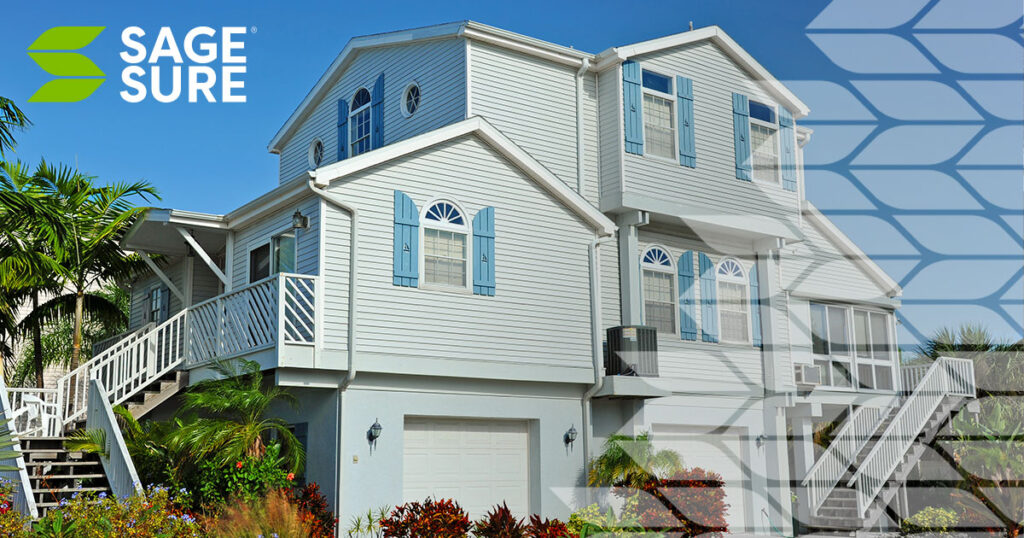Homeowners insurance, also known as home insurance, is not a luxury but a necessity. This essential protection shields your home and possessions against potential damage or theft. In this comprehensive guide, we will walk you through the basics of homeowners insurance policies, ensuring you understand the coverage you need to protect your home effectively.
Why Homeowners Insurance is Essential
Homeowners insurance provides critical financial protection for your home, one of your most significant investments. Mortgage companies typically require borrowers to have insurance coverage for the replacement cost of a property. This means that in the unfortunate event of complete destruction, your insurer will cover the cost to rebuild the property, often making the settlement payable to both you and your lender.
Even if you don’t own a home, having insurance is still advisable. Many landlords require tenants to maintain renters insurance coverage, and it is wise to have this protection regardless of requirements. Homeowners insurance ensures peace of mind, knowing your property and possessions are safeguarded.
Key Takeaways
- Comprehensive Coverage: Homeowners insurance policies typically cover destruction and damage to the residence’s interior and exterior, loss or theft of possessions, and personal liability for harm to others.
- Levels of Coverage: There are three basic levels of coverage: actual cash value, replacement cost, and extended replacement cost/value.
- Determining Policy Rates: Insurers determine policy rates based on the risk of you filing a claim, considering past claim history, the neighborhood, and the condition of the home.
- Shopping for Policies: It’s crucial to get quotes from at least five companies and check with any insurer you already work with for better deals.
What a Homeowners Policy Provides
Damage to the Interior or Exterior of Your House
Homeowners insurance covers damage due to various disasters such as fire, hurricanes, lightning, and vandalism. Your insurer compensates you to repair or rebuild your house. However, standard policies typically do not cover destruction from floods, earthquakes, or poor home maintenance. For these, you may need separate riders or policies. Freestanding structures like garages or sheds may also require separate coverage.
Personal Possessions
Your policy covers the contents of your home, such as clothing, furniture, and appliances, if they are destroyed in a covered disaster. Off-premises coverage allows you to file a claim for lost items, like jewelry, no matter where in the world you lost them. Generally, insurance companies provide coverage for 50% to 70% of the amount of insurance you have on your home’s structure. For high-value items, consider purchasing additional coverage or riders.

Personal Liability for Damage or Injuries
Liability coverage protects you from lawsuits filed by others. This coverage includes incidents caused by pets. If your dog bites someone or your child damages someone’s property, your insurer covers medical expenses and potential legal claims. Policies usually offer a minimum of $100,000 in coverage, but experts recommend at least $300,000. For additional protection, consider an umbrella policy.
Additional Living Expenses
If your home becomes uninhabitable due to a covered disaster, additional living expenses coverage pays for hotel stays, restaurant meals, and other incidental costs. This ensures you can maintain your standard of living while your home is being repaired. Policies have daily and total limits, which you can increase by paying higher premiums.
Different Types of Homeowners Coverage
Homeowners insurance comes in various forms, designated HO-1 through HO-8, each offering different levels of protection depending on the homeowner’s needs and the type of residence. Here are the three primary levels of coverage:
Actual Cash Value
This coverage reimburses the cost of your home and belongings after deducting depreciation. It pays for what your property is worth at the time of the damage, not the amount you originally paid for it.
Replacement Cost
Replacement cost policies cover the actual cash value of your home and possessions without deducting depreciation. This ensures you can repair or rebuild your home to its original value.
Guaranteed (or Extended) Replacement Cost/Value
The most comprehensive coverage, this policy pays whatever it costs to repair or rebuild your home, even if it exceeds your policy limit. Some insurers offer an extended replacement, providing additional coverage above the policy limit, typically 20% to 25% higher.
What Isn’t Covered by Homeowners Insurance?
Standard homeowners insurance policies have exclusions for certain natural disasters and maintenance issues. Common exclusions include damage from floods, earthquakes, and gradual sinkhole damage. Coverage for these events requires separate policies. Additionally, standard policies do not cover damages from sewer backups, pest infestations, mold, or normal wear and tear.
Acts of war, terrorism, and nuclear accidents are also excluded. Damage you intentionally cause or costs to comply with updated building codes after a covered loss may not be fully covered by standard policies.
How Are Homeowners Insurance Rates Determined?
Rates are primarily based on the insurer’s risk assessment of the likelihood you will file a claim. Insurers consider past claim history, the neighborhood, and the condition of the home. A home with multiple claims in the past can increase your premium, and extensive claim history may make you ineligible for coverage.
Factors like the crime rate in your area, the availability of building materials, and specific coverage options, such as riders for valuable items, also influence your rate. Generally, anything that increases the risk of the insurer paying out damages will result in higher premiums.
Conclusion
Understanding homeowners insurance is crucial for protecting one of your most significant investments—your home. By familiarizing yourself with the different types of coverage, you can make informed decisions about the level of protection you need. Remember, homeowners insurance is not just about safeguarding your property but also about securing peace of mind for you and your family.
Ensure you evaluate your policy options carefully, considering factors like replacement cost and liability coverage. Don’t forget to shop around and get quotes from multiple insurers to find the best deal. With the right policy, you can rest easy knowing that your home and possessions are well-protected against life’s uncertainties.



